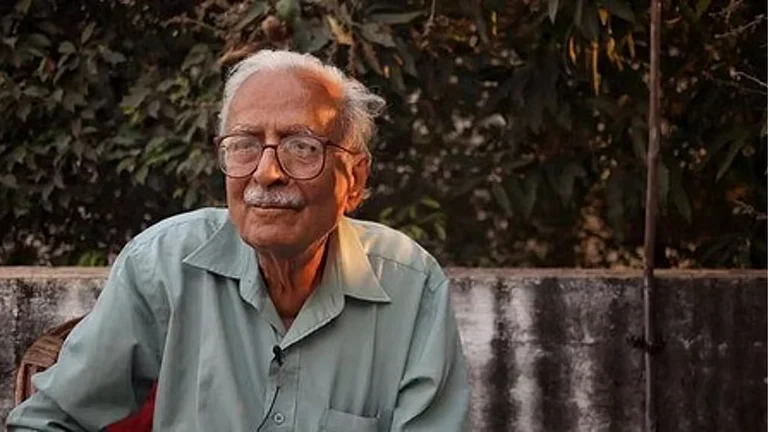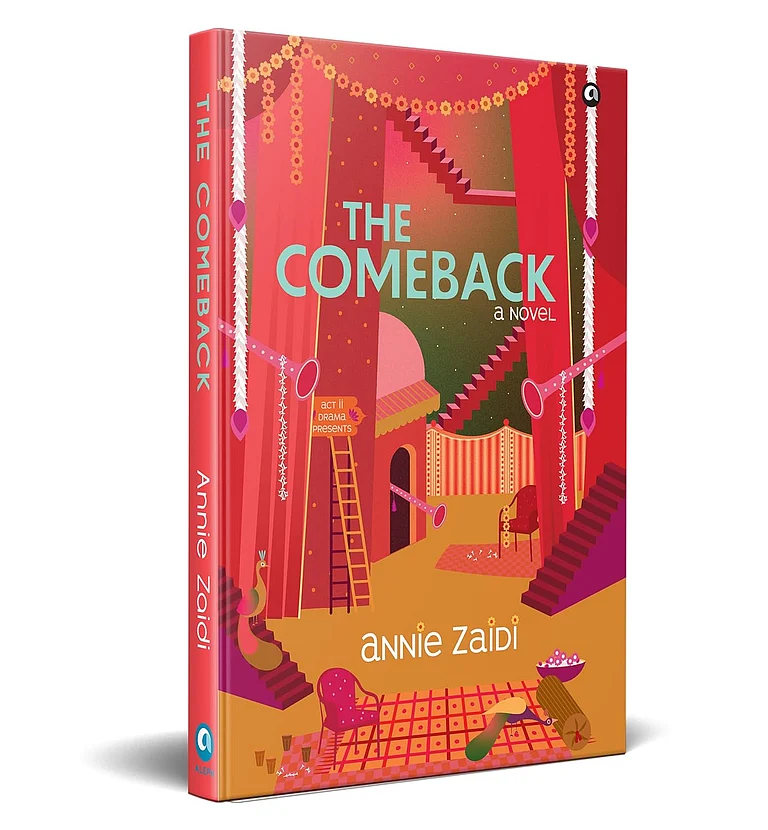Long before the digital space was flooded with OTT platforms and television had private channels, North India’s Hindi belt was ruled by pulp novels. The name ‘pulp fiction’—lugdi sahitya in Hindi—is representative of the black or greyish ‘pulp paper’ these novels are printed on. The white paper used to produce ‘literary’ books was expensive, making it out of bounds for most small-town and rural readers.
While high-class litterateurs scorned at pulp, a big mass market grew from the back of dirt-cheap copies, fast-paced plots, larger-than-life villains, and heroes, who navigated courtroom battles, waged spy wars, and battled mafias. Several characters introduced decades ago, such as Keshav Pandit, Vijay-Vikas duo, Vimal, and Sunil, are fondly remembered and read even today.
With time leaps, character crossovers, ensembles and spin-offs, pulp fiction developed storytelling techniques that mainstream Indian cinema—arguably the most popular storytelling medium in India—has yet not produced.
Pulp fiction—India’s airport novel
Pulp fiction novels in India are similar to the airport novels in the West. Long train journeys and bumpy bus rides through the dusty North Indian hinterland would be unimaginable without these reads that are available at the AH Wheeler stalls on railway platforms and newsstands around bus stands. From these locations, the novels made their way to the rural hinterland where an exchange culture boomed. The stalls doubled as libraries where you could rent novels like renting out DVDs, and people in the hinterland often exchanged one for another.
A bookstore with one of the highest footfalls in Meerut—the hub of Hindi pulp fiction—emerged opposite one of the city’s main bus stands. Janata Book Stall. Bhupinder Kumar Chaudhary, who ran the store for over three decades, tells Outlook that in the 1980s-90s the craze was such that orders were always placed in advance. “Readers used to place advance orders with us, and we used to place orders with the publishers in advance. Publishers used to inform us of upcoming titles and reprints all the time. Sometimes the first print run was sold out within the first week itself,” says Chaudhary.
While there are no formal figures since pulp fiction was always beyond the mainstream press and surveying agencies, publishers and writers tell Outlook that average print-runs in its heyday were in lakhs. One of Ved Prakash Sharma’s most popular novels, Vardi Wala Gunda, is said to have sold around 15 lakh copies on the day of its launch.
Recipe for success?
The simple, logical reason is that the novels clicked with the readers. Besides this, most of the pulp readers hailed from the middle-to-lower classes, and cheap paperbacks were all they could afford as their window to entertainment, often a substitute for films. Other reasons that made pulp popular range from the diverse nature of stories that catered to every segment, fictionalisation of contemporary politics to techniques such as writers’ self-insertion that brought the author closer to readers.
For example, in Vardi Wala Gunda, Ved Prakash Sharma devotes an entire page to mock himself through a dialogue between two corrupt policemen. One asks the other if he has heard of Sharma. Mocking the popular Hindi saying that "sahitya samaj ka darpan hota hai" (literature is the reflection of society), one of the policemen says, “Both he [Sharma] and public are fools. These writers are brainless people. They themselves write and advertise that "sahitya samaj ka darpan hota hai" and then they write nonsense like this. Now ask these braindead writers that if literature is indeed a reflection of society, wouldn’t their police inspectors be like me [corrupt] instead of the kind of inspectors that they write that don’t exist in the real world?”
Compared to today when publishers and writers say only a few genres are published and sold, the 1980s-90s were a time when a diverse nature of stories were published. While there were thrillers and crime fiction stories, there were also saamajik upanyas that touched themes like women’s rights, dowry, and women’s role in society. Besides these, some writers also wrote historical fiction, such as Om Prakash Sharma.
Chaudhary of Janta Book Stall tells Outlook that while men used to read thrillers and crime fiction mostly, many women read social novels by Rajhans, Manoj and Ranu. Kanwal Sharma, a novelist and translator, tells Outlook that pulp fiction in the 1990s was very diverse. “There were murder mysteries, thrillers, and horror stories. Besides novels, there were magazines and newspapers too that published short stories. Pulp was read by everyone—from a rickshaw-puller to the elites. They read stories as per their taste as it had something to offer to everyone. Now you don’t have that diversity,” says Sharma.
In their novels, pulp writers fictionalised contemporary international world order and introduced their readers to the American CIA, India-Pakistan intrigues, and even Northeast India, far removed from the Hindi belt. Like Sharma’s hit novel Vardi Wala Gunda was rooted in the LTTE-led Sri Lankan Civil War and it fictionalised Rajiv Gandhi’s assassination.
Peter Friedlander of the Australian National University cited, in his paper titled Hindi Detective Pulp Fiction, noted the fictionalisation of notable events such as India-Pakistan tensions, the rise of the Chinese and American hegemony. Citing Dinesh Thakur’s novel Sannata, Friedlander explains, “The story’s broad outline is that India’s leading nuclear scientist is kidnapped by the Pakistanis, and our hero Reema Bharti parachutes into Pakistan and defeats the entire Pakistani defense force on her own, rescuing the scientist and his daughter and bringing them back to India. These books typically responded to world news. Plots related to nuclear weapons appeared when Indians tested nuclear weapons, and plots about wars with Pakistan emerged when there were tensions with Pakistan.”
In another novel Savan Ki Badri, Chinese too make an appearance. Friedlander says, “This publication shows the odd way in which themes and current affairs are mixed up in these novels. It features a cast of virtuous and villainous Chinese characters as well as the usual criminals and heroes, and is an account of the collaboration between international criminal mafia gangs and the Chinese to destabilise Northeastern states.”
Spin-offs and ghost-writing in pulp fiction
Ghost-writing is a well-established practice within the pulp industry. Ved Prakash Sharma ghost-wrote 23 novels before the first novel was published under his name.
Novels are also published under imaginary writers’ names. They are ‘trade writers’ in pulp parlance, a euphemism for a ghost-writer who —like one Shiva Pandit— are either created from scratch or are characters that are spun off as writers. Keshav Pandit and Reema Bharti are best examples of the second class of trade writers.
Keshav Pandit is a popular character created by Sharma, but over a hundred novels are credited to Pandit as a writer. Even his son, Ashirvad Pandit, was eventually spun-off as a trade writer. “Once a character becomes popular, the author and publisher decide to introduce it as a writer. While you see Keshav Pandit’s name printed on the novel, the publisher gives a plotline to a ghost writer to pen it,” informs an industry person under anonymity.
The story of Reema Bharti is a bit complicated. Friedlander’s above paper notes: “Reema Bharti books were written by Dinesh Ṭhakur and published by Delhi’s Manoj Pocketbooks, whilst at the same time other Reema Bharti books by Pradip Ṭhakur were published by Meerut’s Rajat Prakashan.”
The pulp industry insider quoted above adds that publishers often have a team of ghost-writers to churn out quick titles, so Shiva Pandit or Keshav Pandit novels are ghost-written by several writers on the publishers’ payroll. However, Reema Bharti novels are currently being published by Meerut-based Ravi Pocket Books, which noted in a Facebook post that Reema exists and is a Delhi-based writer.
Special mention, Meerut
Hindi and Urdu pulp fiction was already an established genre by the time Meerut emerged as the pulp fiction hub in the 1980s. By then, writers like Ibne Safi, Om Prakash Sharma, and Surender Mohan Pathak had already attained fame. Meerut has published three generations of writers and has sent many of them to Mumbai, says Manish Chand Jain of Ravi Pocket Books, founded in the 1950s. They are now well-established film and television writers, he says.
In Om Prakash’s case, he moved from Delhi to Meerut and became one of the first prominent writers from here. Soon, Meerut eclipsed all cities in terms of writers and the volume of books published. Ved Prakash Sharma, Rituraj Jain and Parshuram Sharma are other prolific pulp writers who set their base in Meerut. Some of the top publishers were also from this city. At its peak, there were almost 40 pulp publishers in Meerut; a few leading ones were Tulsi Paper Books, Ravi Pocket Books, Dheeraj Pocket Books, Rajat Prakashan, and Gauri Books. Ravi and Dheeraj are still running, albeit nothing like the illustrious bygone years. The city also published writers across India such as Anil Saluja from Panipat, Surender Mohan Pathak from Delhi, and Amit Khan, originally from Ghaziabad but now in Mumbai.

























